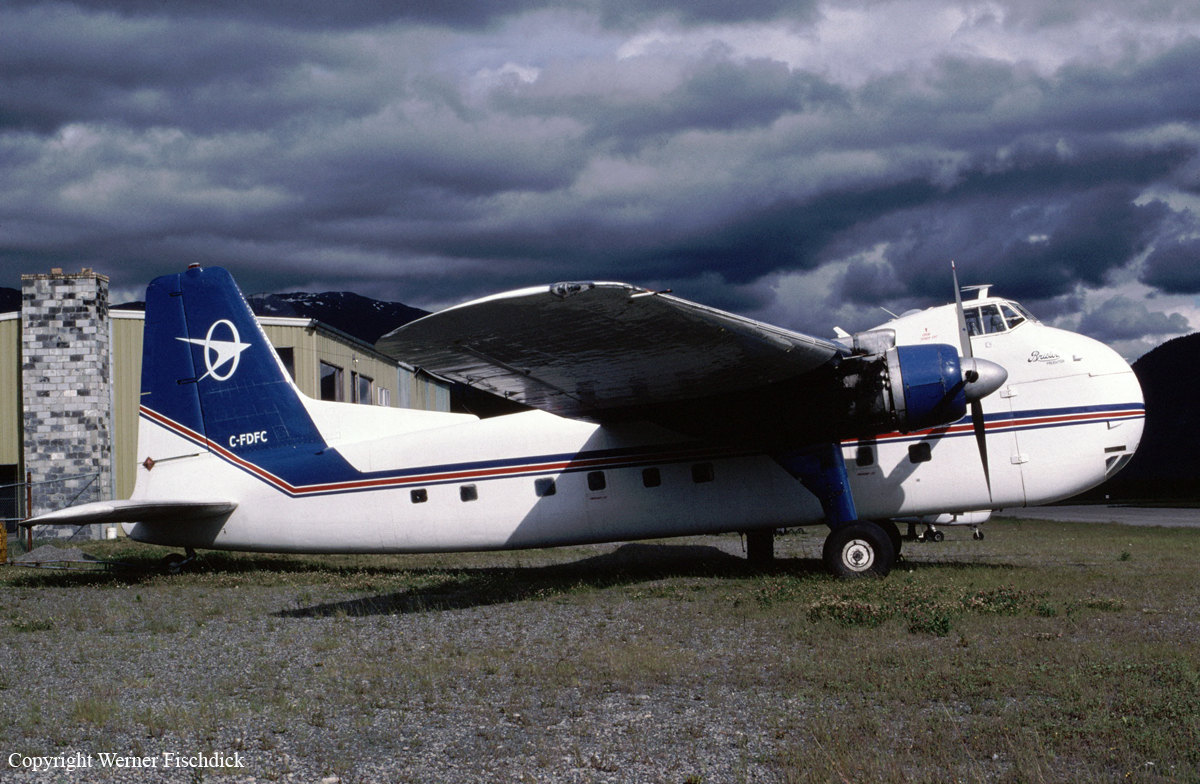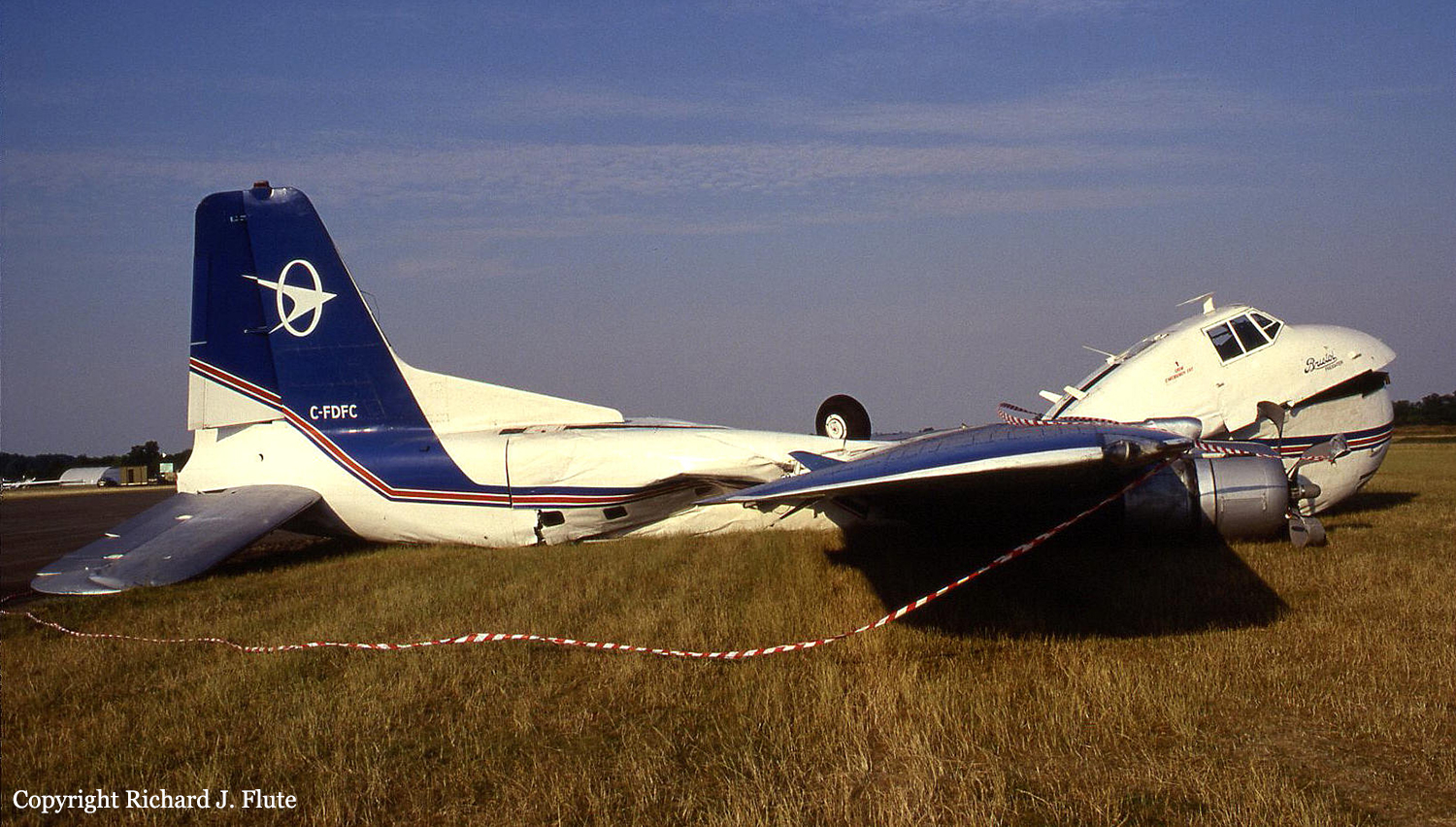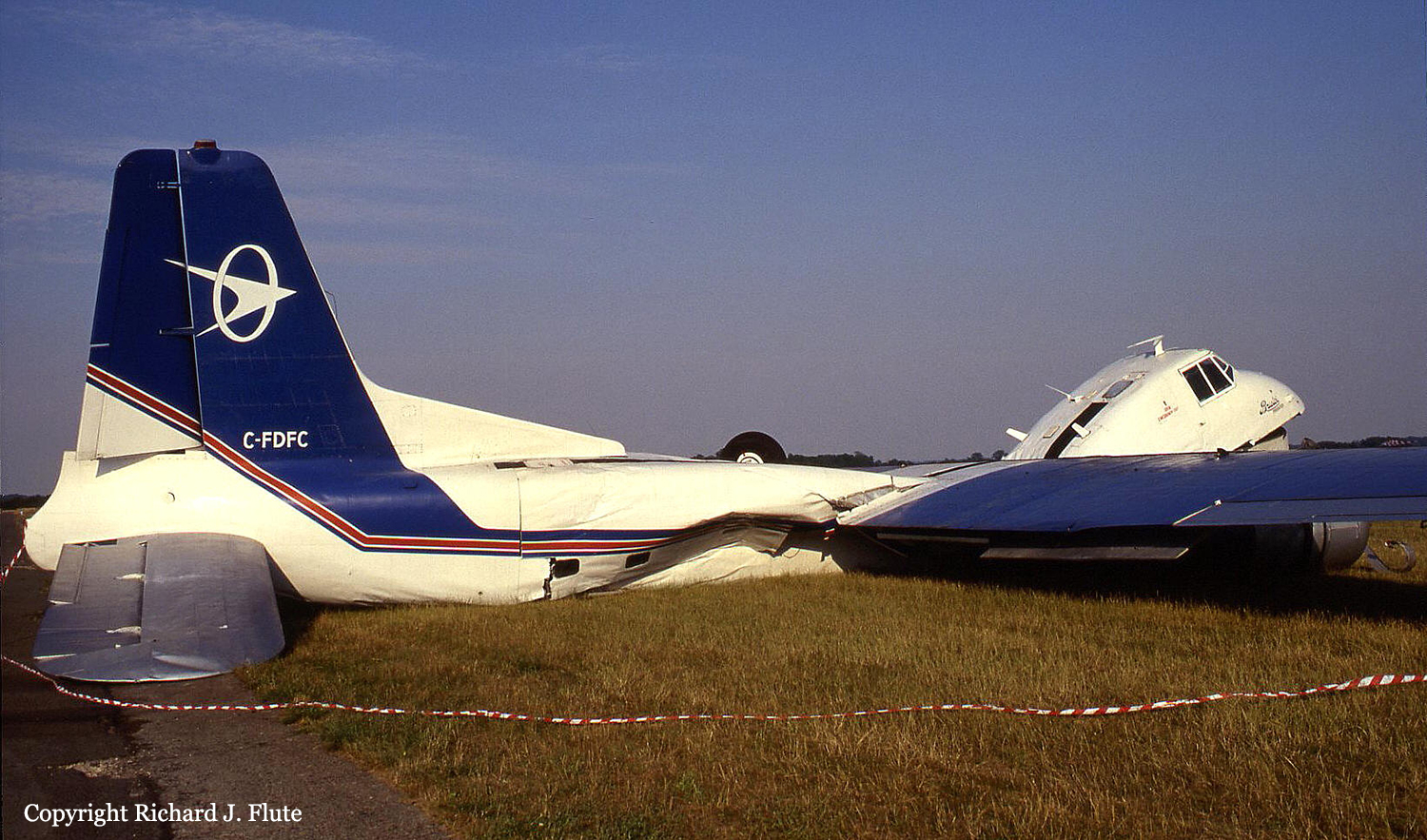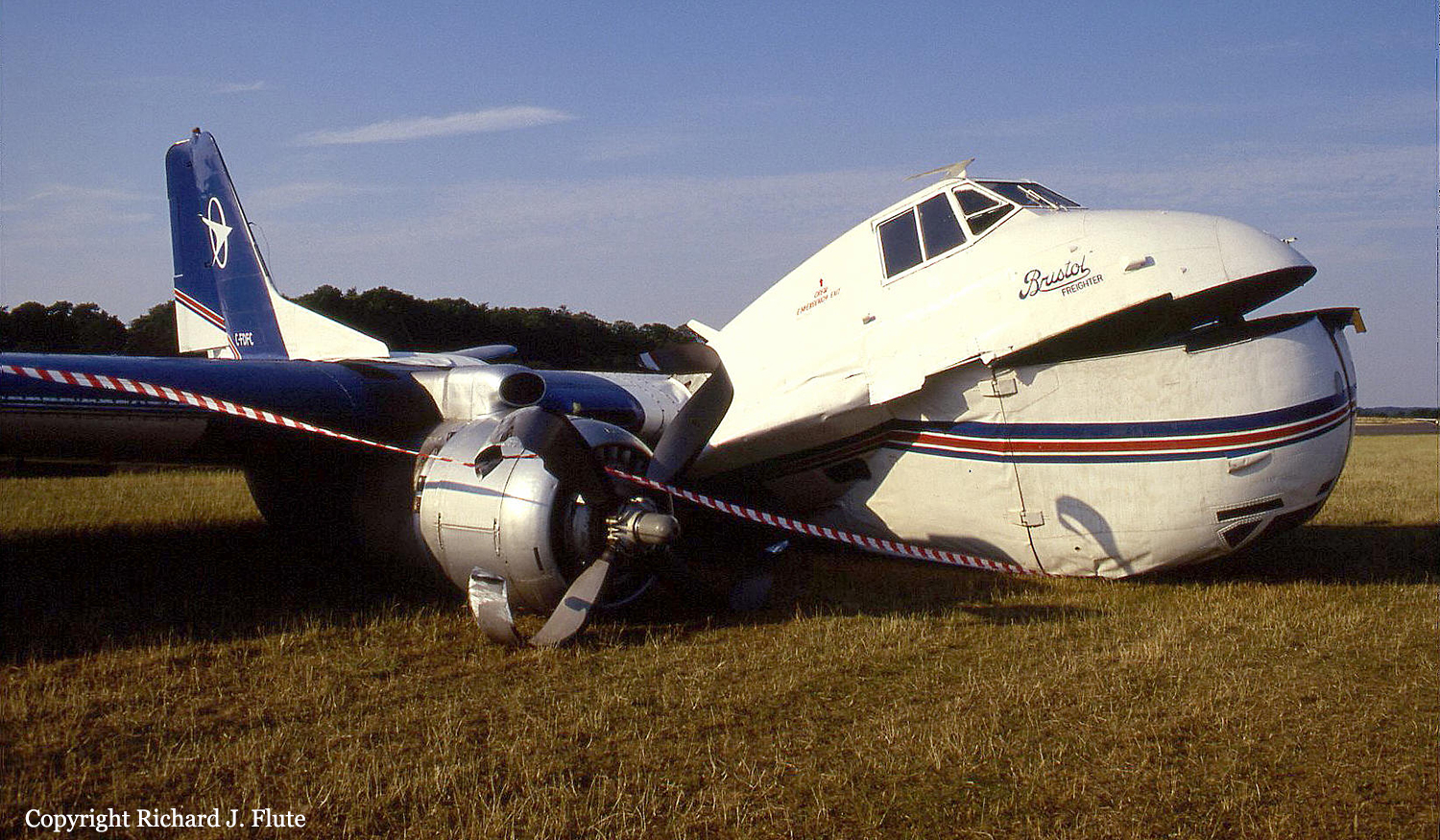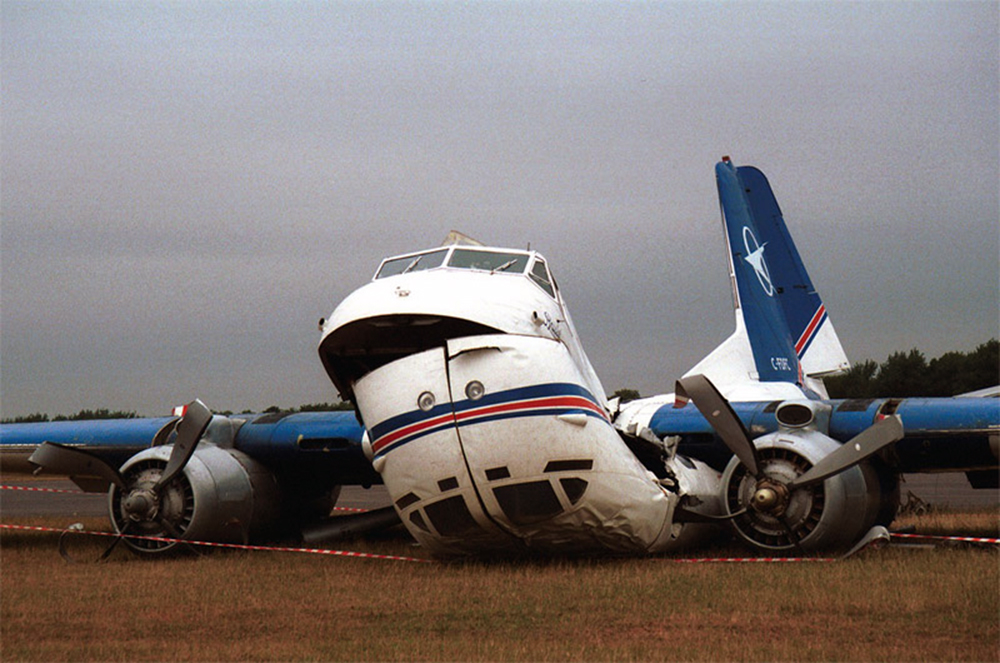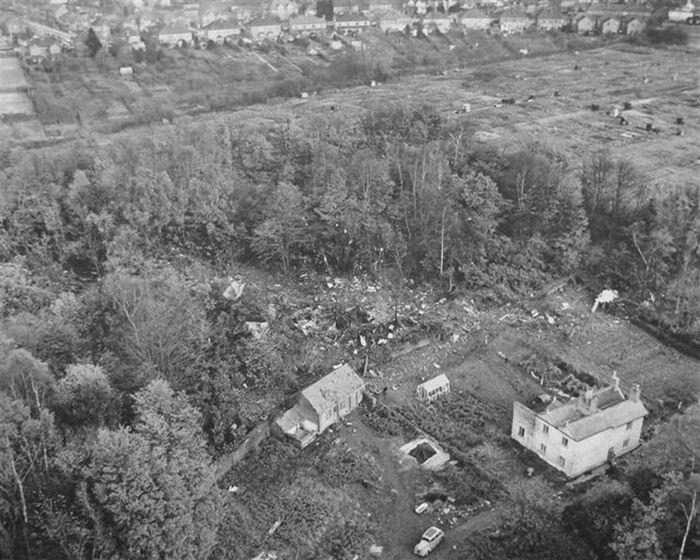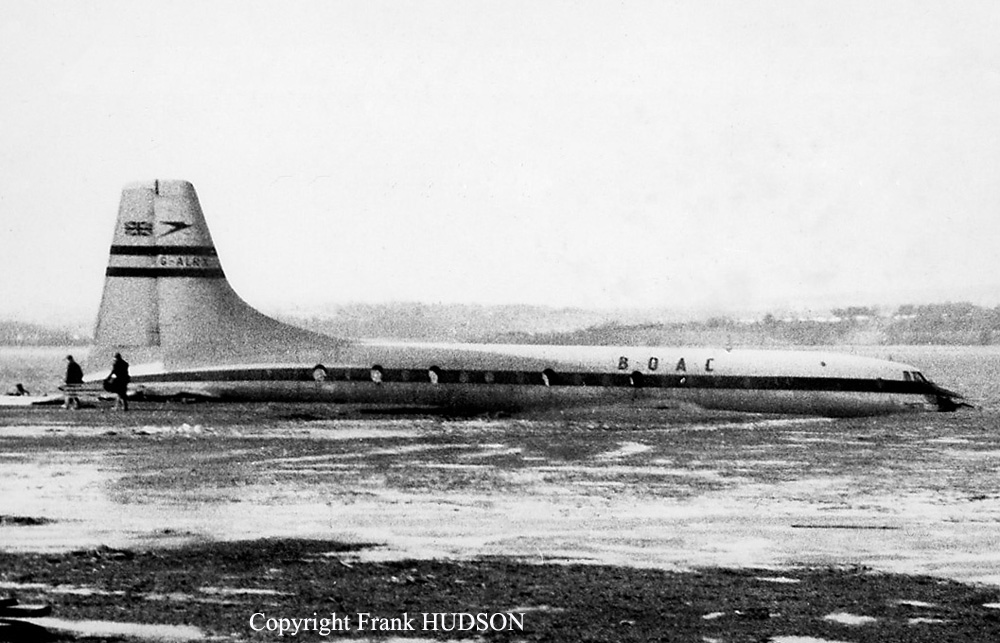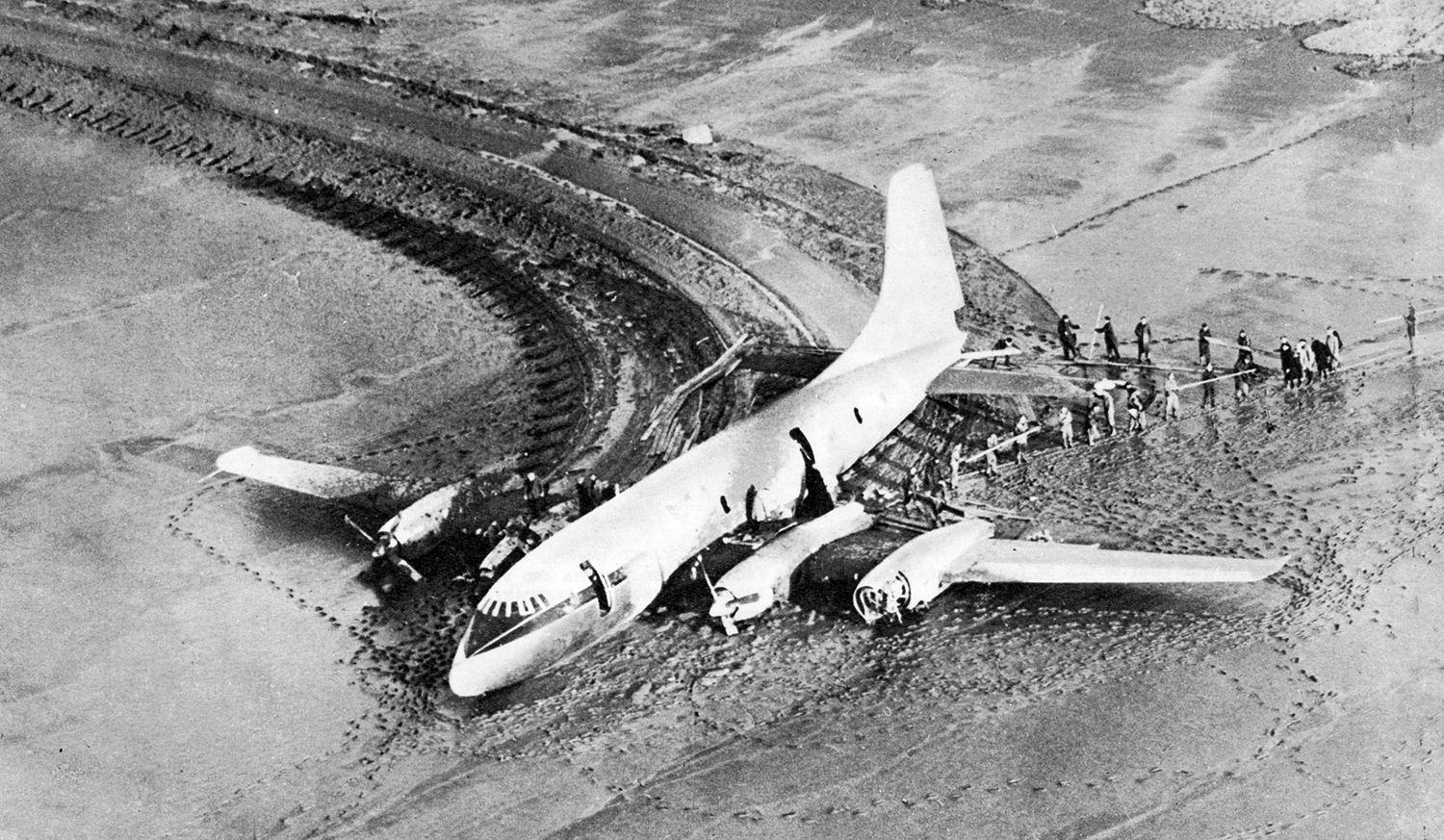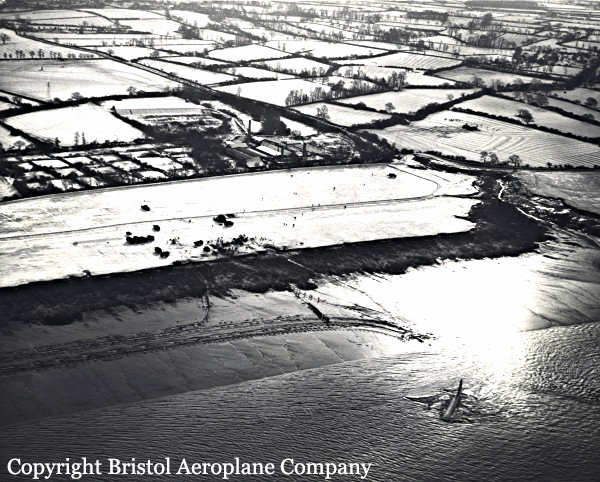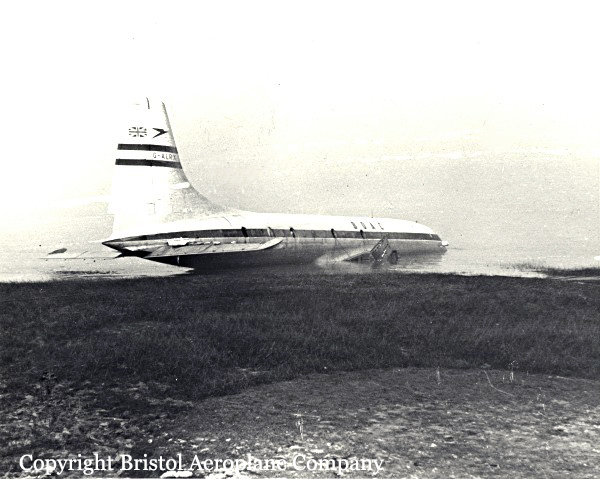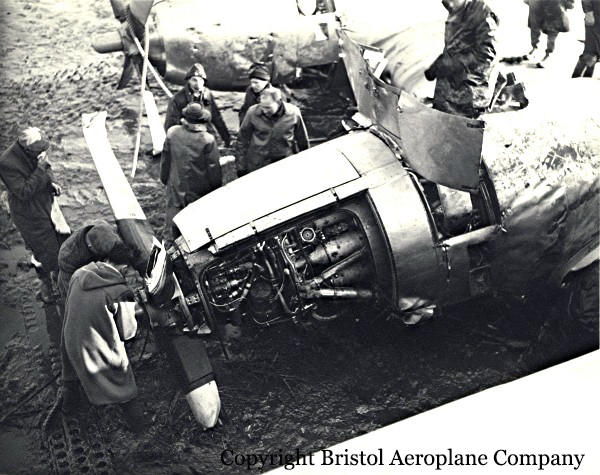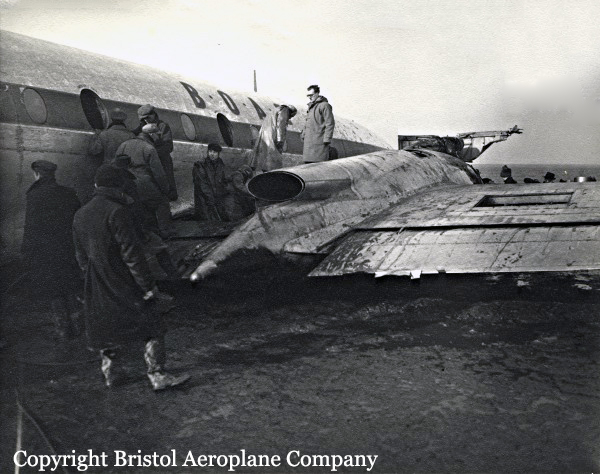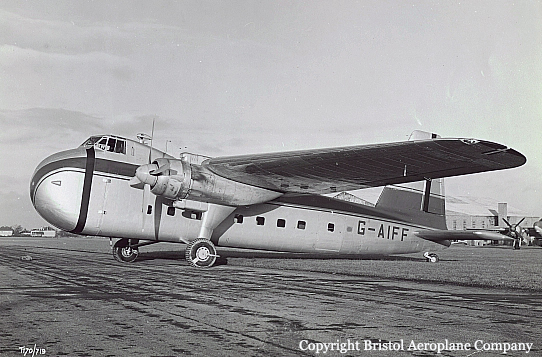Crash of a Bristol 170 Freighter Mk 31M in Enstone
Date & Time:
Jul 18, 1996 at 1135 LT
Registration:
C-FDFC
Survivors:
Yes
Schedule:
Enstone - Bristol
MSN:
13218
YOM:
1954
Crew on board:
2
Crew fatalities:
Pax on board:
6
Pax fatalities:
Other fatalities:
Total fatalities:
0
Captain / Total hours on type:
1300.00
Copilot / Total hours on type:
60
Circumstances:
The weather at the departure airfield consisted of a light and variable wind, good visibility and a temperature of 20ºC. At the start of the take-off run the aircraft, which was being flown by the copilot, who is also an experienced pilot with some 60 hours on type, began to swing to the right. Corrective action caused it to swing to the left but, after further correction,the aircraft continued accelerating and swing to the right. The Bristol Freighter is well known for its tendency to swing on takeoff. The commander joined the co-pilot on the controls and attempted to assist in correcting the right-hand swing. It became apparent to the pilots that they would be unable to prevent the aircraft running over the edge of the runway and, as there were people standing by the edge and a small control tower building behind them, they applied full up-elevator in an effort to avoid a collision. Because of the low airspeed at which this occurred, the aircraft stalled and the left wing tip hit the ground. This caused the aircraft to turn so that it was then travelling sideways which resulted in the landing gear collapsing as it touched the runway. The aircraft then slid off the runway onto the grass. There was no fire and the only injuries were sustained by three of the aircraft passengers.
Final Report:
